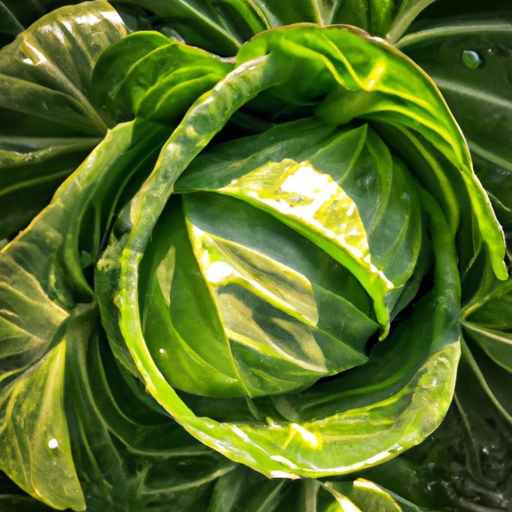Green Cabbage
Description

Green cabbage is a round, leafy vegetable that is a staple in many different cuisines across the globe. It is known for its compact leaves that are pale to dark green in color, and it grows from a short and stout stem. This cruciferous vegetable is part of the Brassica family, which also includes broccoli, kale, and Brussels sprouts. Green cabbage is widely used in both raw and cooked forms and is appreciated for its crispy texture and slightly peppery flavor, which can vary in intensity depending on the maturity of the cabbage.
Common uses
Green cabbage is commonly used in salads like coleslaw, as a cooked side dish, in soups and stews, and as a wrapping for fillings in dishes such as cabbage rolls. It is also fermented to create sauerkraut and kimchi, which are traditional fermented foods in European and Korean cuisines, respectively. The versatility of green cabbage allows it to be incorporated into a multitude of recipes, making it a favorite ingredient for home cooks and professional chefs alike.
Nutritional value
Calories
A cup of chopped green cabbage (approximately 89g) contains about 22 calories (92 kJ).
Protein
Green cabbage provides about 1 gram of protein per cup.
Fat
It is very low in fat, containing less than 0.1 grams per cup.
Carbohydrates
There are about 5 grams of carbohydrates in a cup of chopped green cabbage, with about 2.2 grams being dietary fiber.
Vitamins
Green cabbage is an excellent source of vitamin K and vitamin C, and also provides some vitamin B6 and folate.
Minerals
It contains minerals such as manganese, calcium, potassium, and magnesium.
Health benefits
Green cabbage is rich in nutrients and antioxidants, including vitamin C and beta-carotene, which are known to promote immune health. The high fiber content aids in digestion and may contribute to weight management. Its glucosinolates, sulfur-containing compounds, are thought to be protective against certain types of cancer. Moreover, the significant amount of vitamin K in green cabbage is beneficial for bone health and proper blood clotting.
Potential risks
While green cabbage is generally safe for consumption, it can cause bloating and flatulence in some individuals due to its high fiber content. Those with thyroid disorders should be cautious with their cabbage intake, as it contains goitrogens, which can interfere with thyroid hormone production when consumed in very large quantities.
Common recipes
Green cabbage is used in a wide array of recipes including traditional Irish colcannon, German sauerkraut, Russian borscht, and Chinese stir-fries.
Cooking methods
It can be steamed, boiled, sautéed, pickled, fermented, or eaten raw, making it a very flexible ingredient in the kitchen.
Pairing with other ingredients
Cabbage pairs well with strong flavors like garlic and onions, as well as with meats such as pork and bacon. It also works well with creamy dressings, tangy vinegars, and robust spices.
Summary
Green cabbage is a nutritious and adaptable vegetable that is incorporated into a plethora of dishes worldwide. With its low calorie count and rich nutrient profile, it offers numerous health benefits and can be prepared in a variety of ways to suit any palate. Its historical importance and versatility in cooking continue to make it a valued ingredient in cuisines from all corners of the globe.